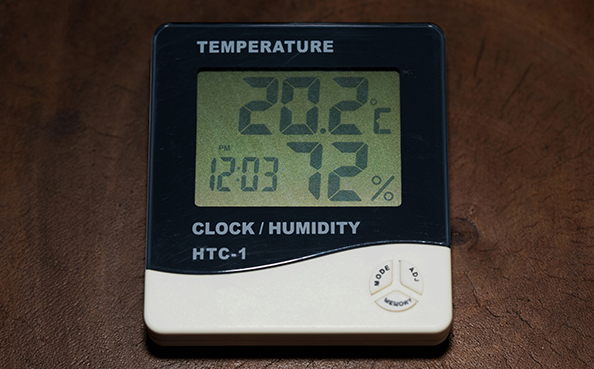
Summer is here and with it comes that oppressive humidity. While you struggle to stay cool, your wood cabinet doors are being affected by that humidity in ways you may not expect. Wood is a natural resource that is constantly adapting to its environment and when that environment becomes more humid, it can have an adverse impact on cabinet doors over the long term.
Swelling
- In humid conditions wood will absorb moisture causing wood cabinet doors to expand in both thickness and width (but not length). This expansion or “swelling” can cause doors to stick or bind. When this excess moisture in the air is absorbed unevenly, parts of the door may warp, cup, or twist. Warped doors may not close properly or may appear crooked. This is especially common with solid wood cabinet doors.
Impacts on Painted Doors
- If a consistent humidity level is not maintained, painted wood cabinet doors could eventually develop hairline cracks along the joints due to the natural expansion and contraction properties of the wood. Stained or clear-coated doors may also show signs of stress over time if seasonal expansion and contraction is not kept to a minimum. At Keystone, we purposefully build our mitre door joints with a small gap on the inside to allow for expansion.
Prevention and Management
- Climate control is key. The best way to ensure that wood movement is limited is to maintain a consistent temperature and humidity level in the area of the cabinetry by using dehumidifiers in damp areas. Air conditioners also remove excess moisture. A hygrometer can help you monitor your indoor humidity levels.
- Because plywood, veneered MDF and Superior Green Panels are more stable than solid wood, and do not expand and contract with changes in temperature and humidity, we recommend using our Superior Green Panels (MDF) for painted doors and drawer fronts.
- If you order unfinished wood cabinet doors, we recommend finishing them immediately after you receive them to reduce the amount of moisture absorbed by the wood. The effects of expansion and contraction will be more noticeable in wider pieces such as slab drawer fronts.
Planning for expansion and contraction
The good news is that wood expansion and contraction is both observable, repeatable and predictable.
Review these charts, to learn how you can accurately gauge the range that each wood species will expand and contract based on moisture changes, and gain more control over how your cabinetry will look and last over time.